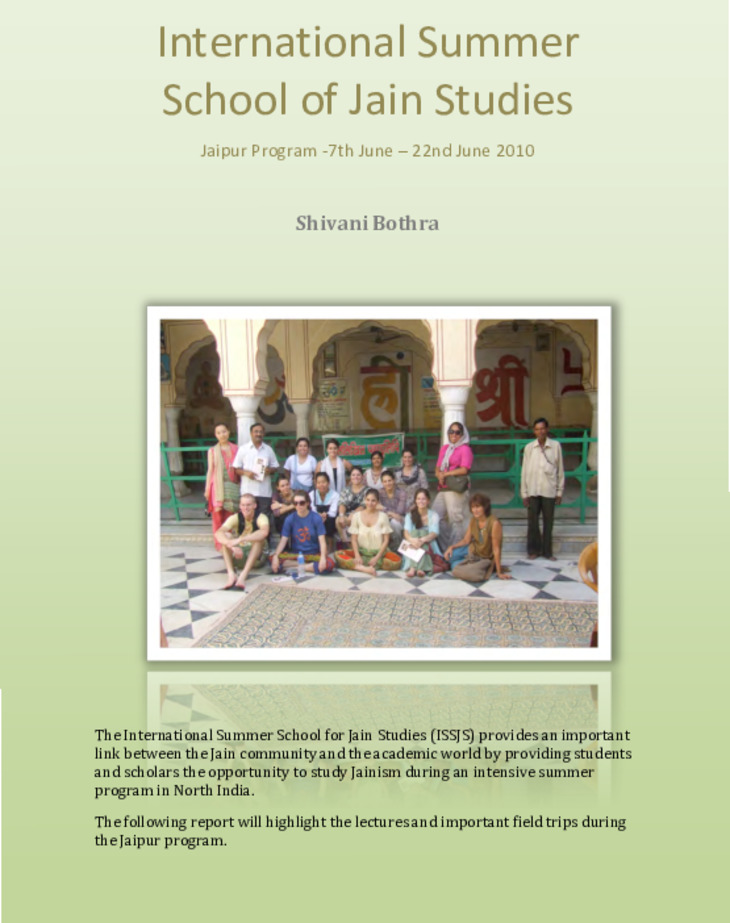
International Summer School for Jain Studies
ISSJS
Jaipur Program
7th June - 22nd June 2010
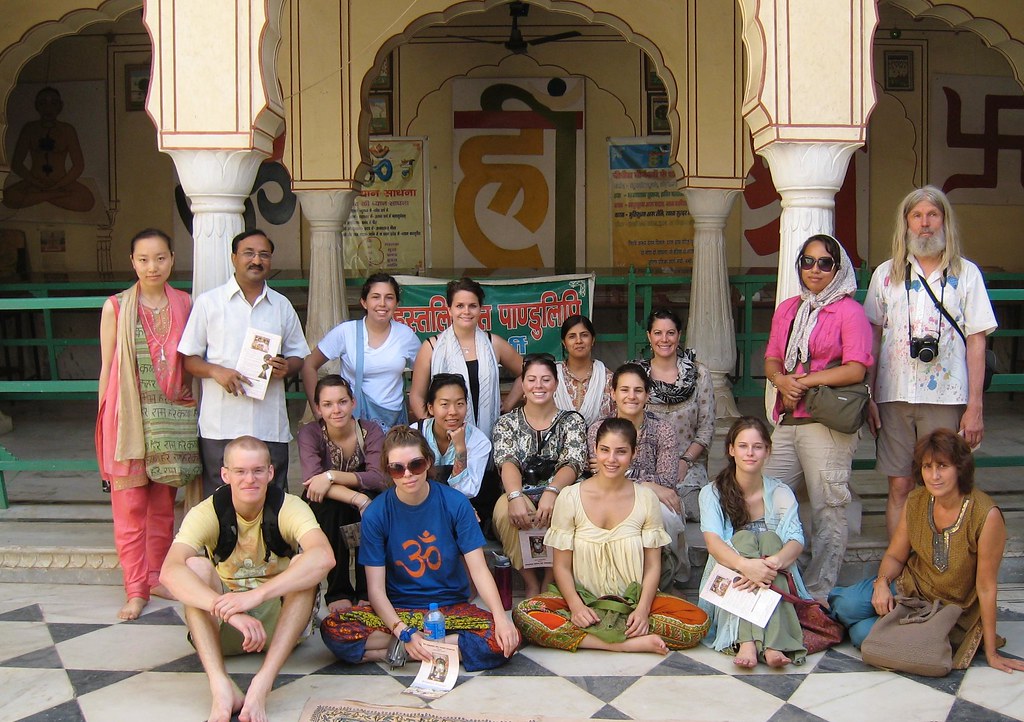
The International Summer School for Jain Studies (ISSJS) provides an important link between the Jain community and the academic world by providing students and scholars the opportunity to study Jainism during an intensive summer program in North India.
The following report will highlight the lectures and important field trips during the Jaipur program.
The students arrived in the evening of the 7th Junefrom New Delhi. The Jaipur ISJS team received them all at the Inter-State Bus Station. The students were given a warm traditional welcome at Bhattarakon ki Nassiyan, Jaipur their venue for the program.
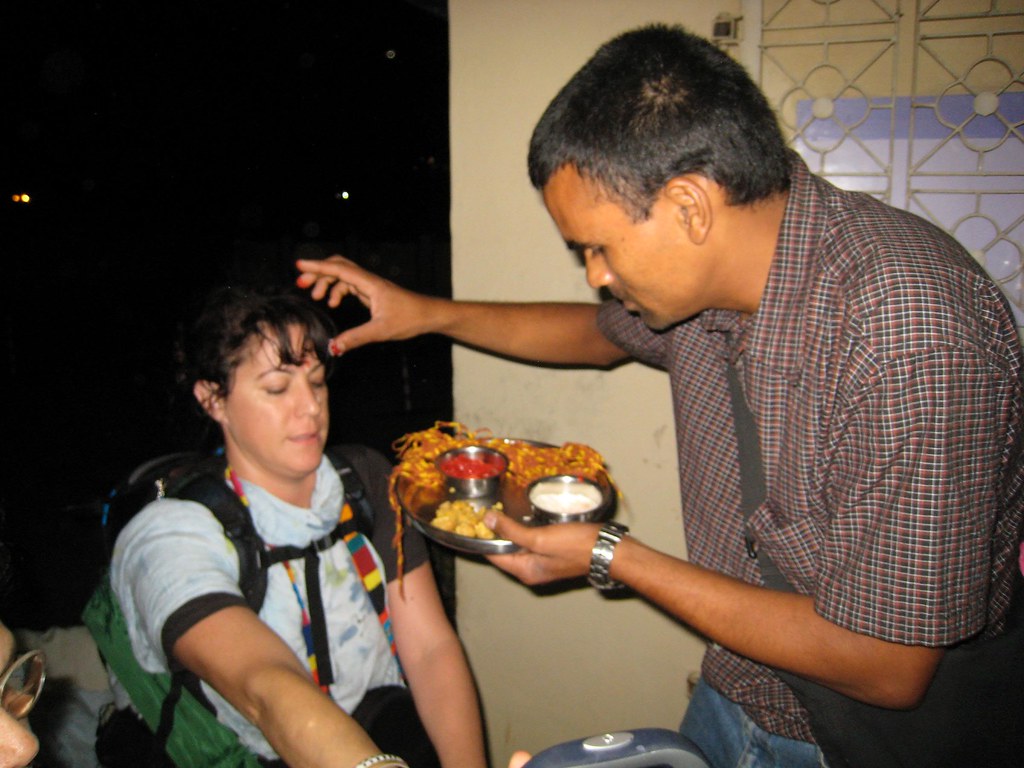
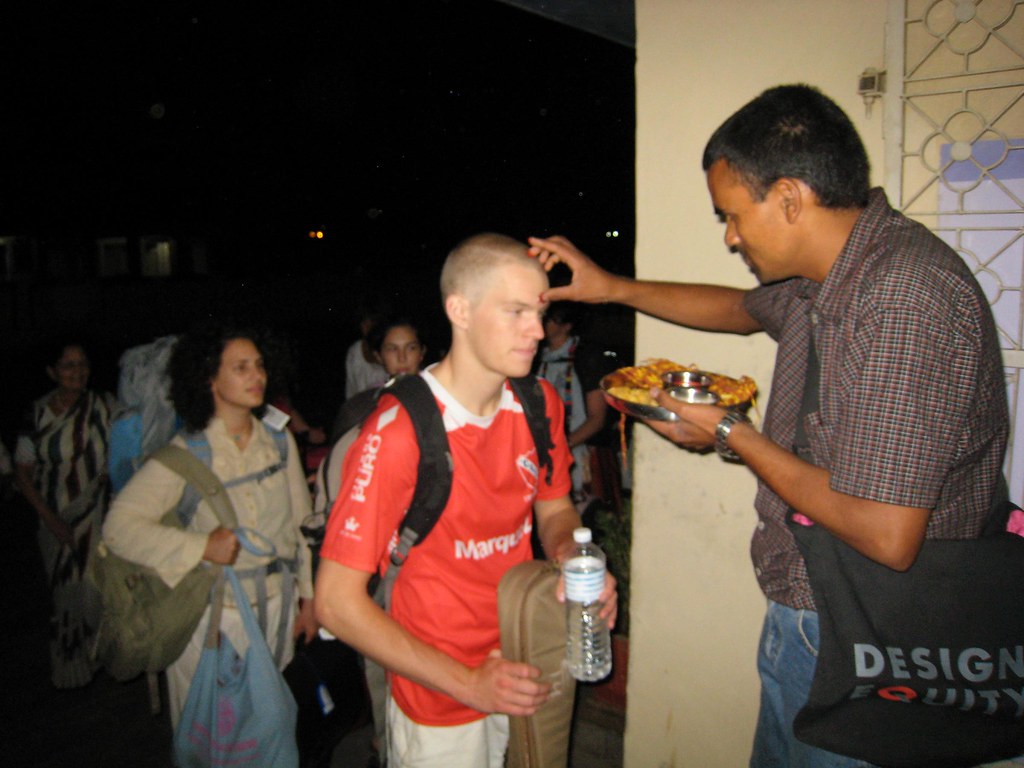
8th June Prof. Sushma Singhvi
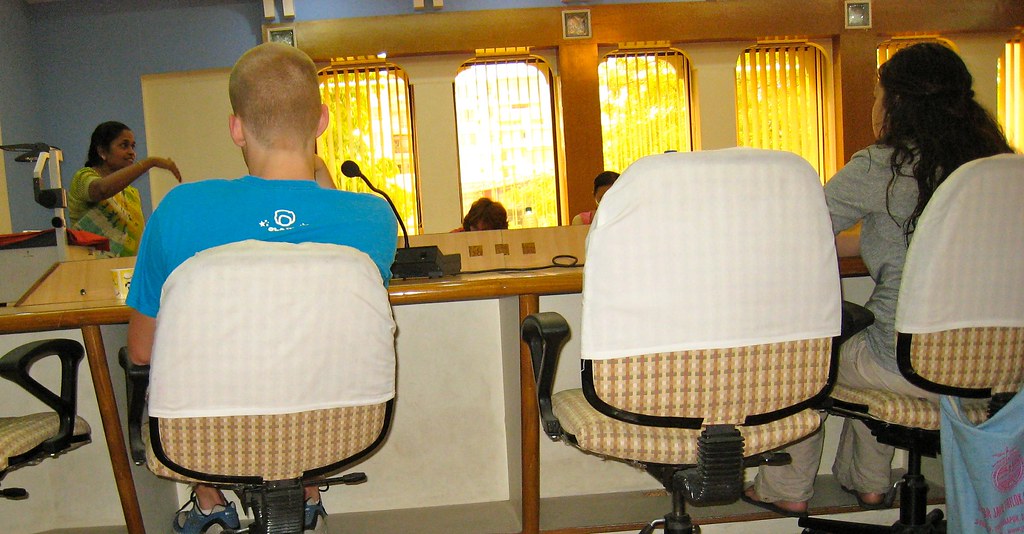
Concept of Soul
Jain philosophy is based on the duality of existence i.e. as living beings and non-living beings. The main focus is on living being only and there also it is the self/soul or atma. The knowledge of self is required so that the religious activities yield the desired result.
Right Belief - Samyak Darshan
Samyak Darshan is rendered as right belief or right faith or right attitude or right conviction. From the real point of view, Samyak Darshan means a sense of realization of self. From the practical point of view it means a firm belief in the fundamental principles of Jainism as propounded by Jinas. Nature of Samyak Darshan through the perspective of different Acharyas had been further elaborated.
9thJune Prof. Kusum Jain
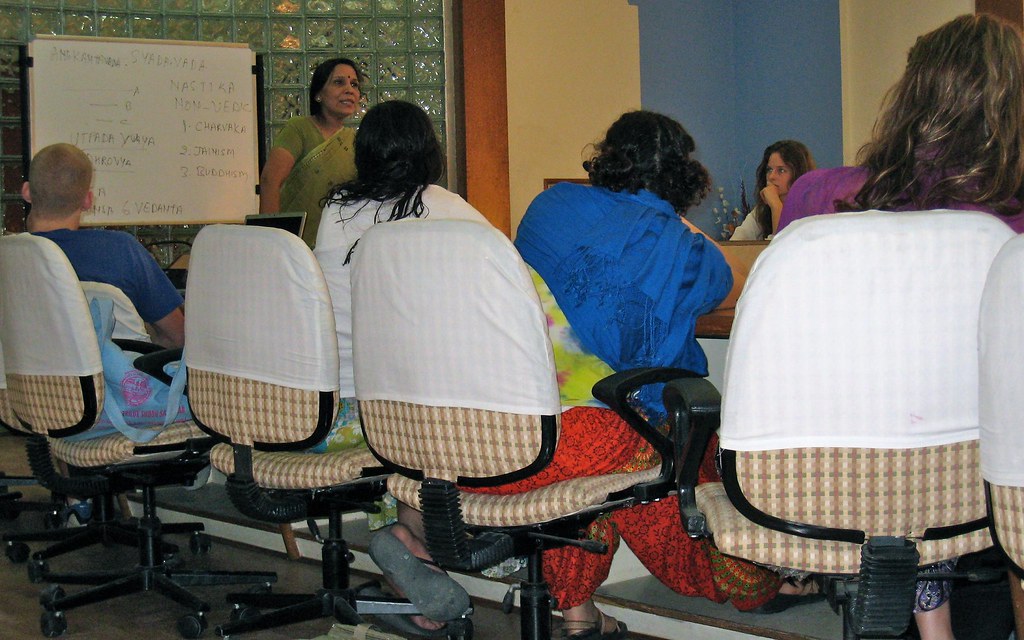
Anekant
was elucidated and interpreted with a brief background of 5000 year old Indian philosophical tradition
9thJune Prof. K.C. Sogani
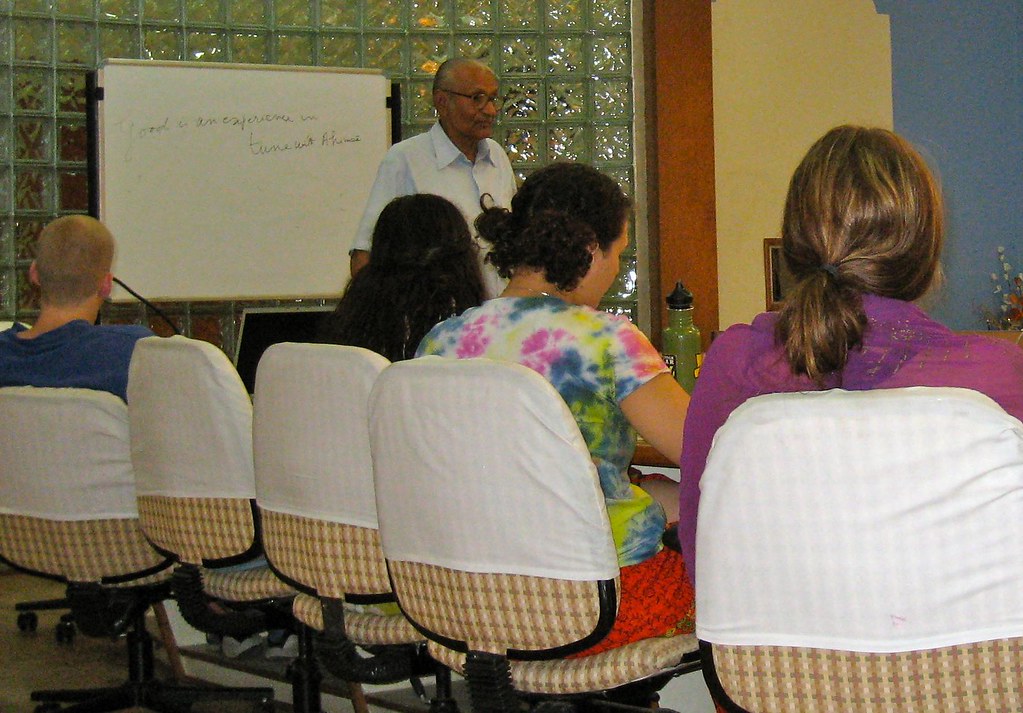
Religion and Morality
“In practice religion and morality are closely associated yet they are quite distinguishable.”
10thJune Prof. Sushma Singhvi
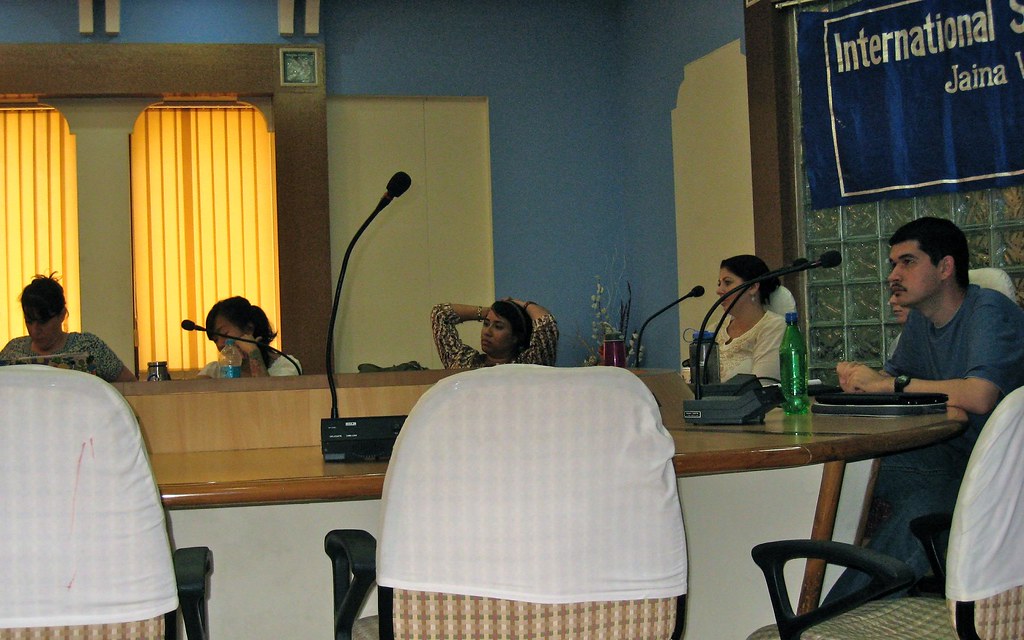
Knowledge
Knowledge is one the most discussed subject in Jaina canonical literature. It is the attribute of soul, which is capable of knowing both self and others. Knowledge is a system consisting of knower, the organs of knowledge called Pramana, their processor and finally the result of knowing.
Naya, Pramana
Different thinkers have taken different views and perceptions about the universe, reality and the ultimate end. The philosophical standpoints propounded by Jaina thinkers are that each view is true from a particular standpoint of the seer and none of them is exhaustive. Nayais relatively a new terminology and Nayavadaand Syadvada are the two wings ofAnekantvada.
11th June Prof. Dayanand Bhargava
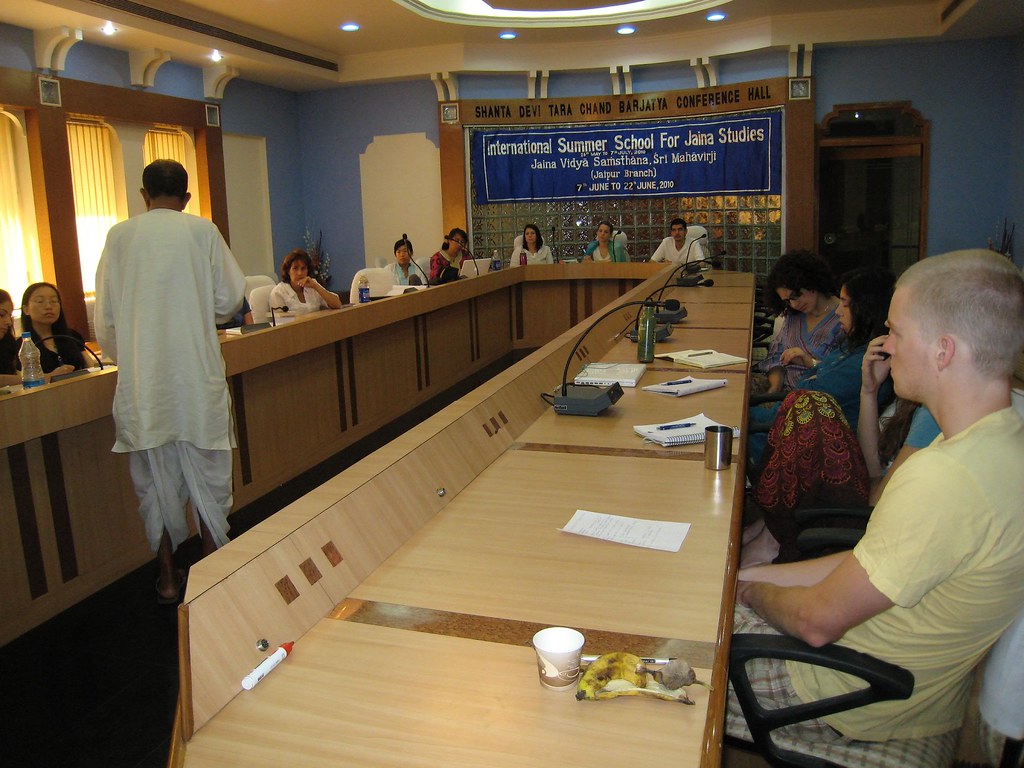
Saman Suttam
It is the initiative of Acharya Vinoba Bhave to develop a unified text of the Jainas, which represents the essence of Jainism accepted by all the four sub sects of Jainism. There is no misinterpretation and this text beautifully summarizes the teachings and philosophy of the Jains in a lucid fashion.
Jaina Yoga, Meditation and Samayika
According to Jaina philosophy knowledge should be translated into action- right conduct. Excitement is the nature of happiness and the happiness received is temporarily. As per the Jaina philosophy, temporary happiness is not the right approach to life, or the worldly possessions cannot be true goal of life. They are experiences. Search of permanent happiness lies in meditation.
12th June Prof. M.R. Gelra
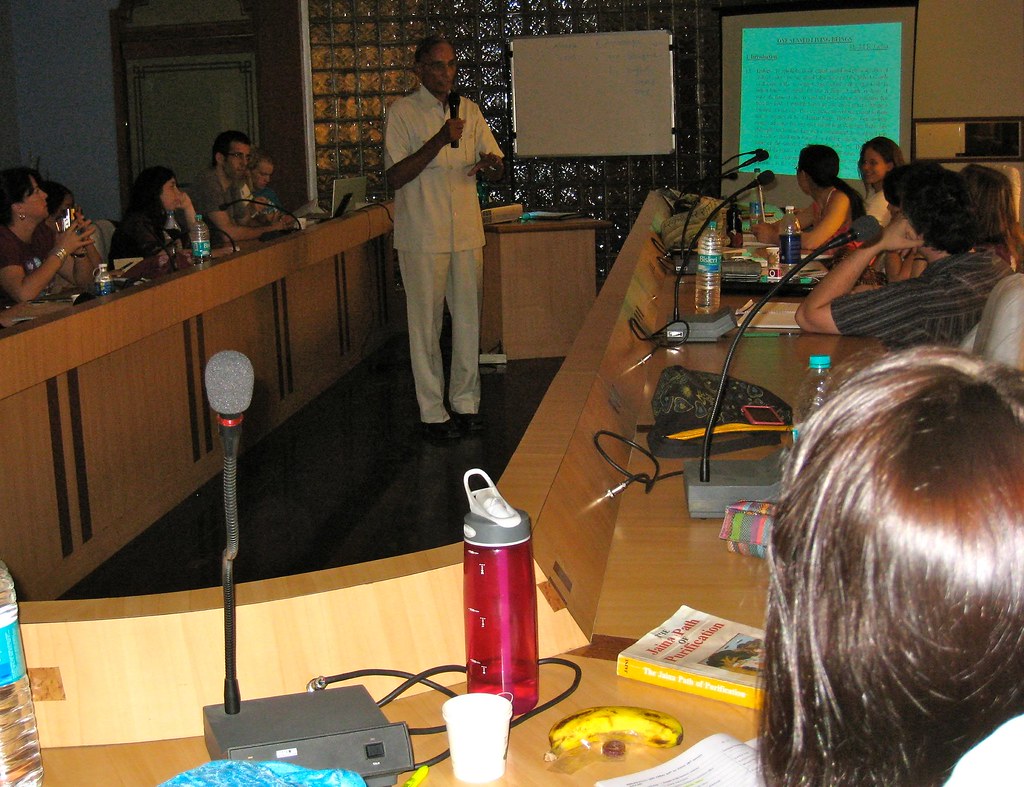
Matter
The term Pudgala as found in Jaina literature is loosely equivalent to the scientific term “matter.” It has two parts pud and gala. The first part means to combine and the second part means to disassociate. Thus the etymological definition of pudgala is that (dravya) substance which undergoes modifications by combinations and disassociation. Pudgala means tangible entity having four qualities of touch, taste, color and smell.
One Sensed Jiva
Depending upon the number of sense organs present, Jivas are classified into five types - One sense - touch; two senses - touch and taste; three senses - touch, taste and smell; four senses - touch, taste, smell and sight; five senses - touch, taste, smell, sight and hear. The one sensed jiva are the earth bodied, water bodied, fire bodied, air bodied and lastly the vegetable bodied.
13th June Heritage Walk - Old City
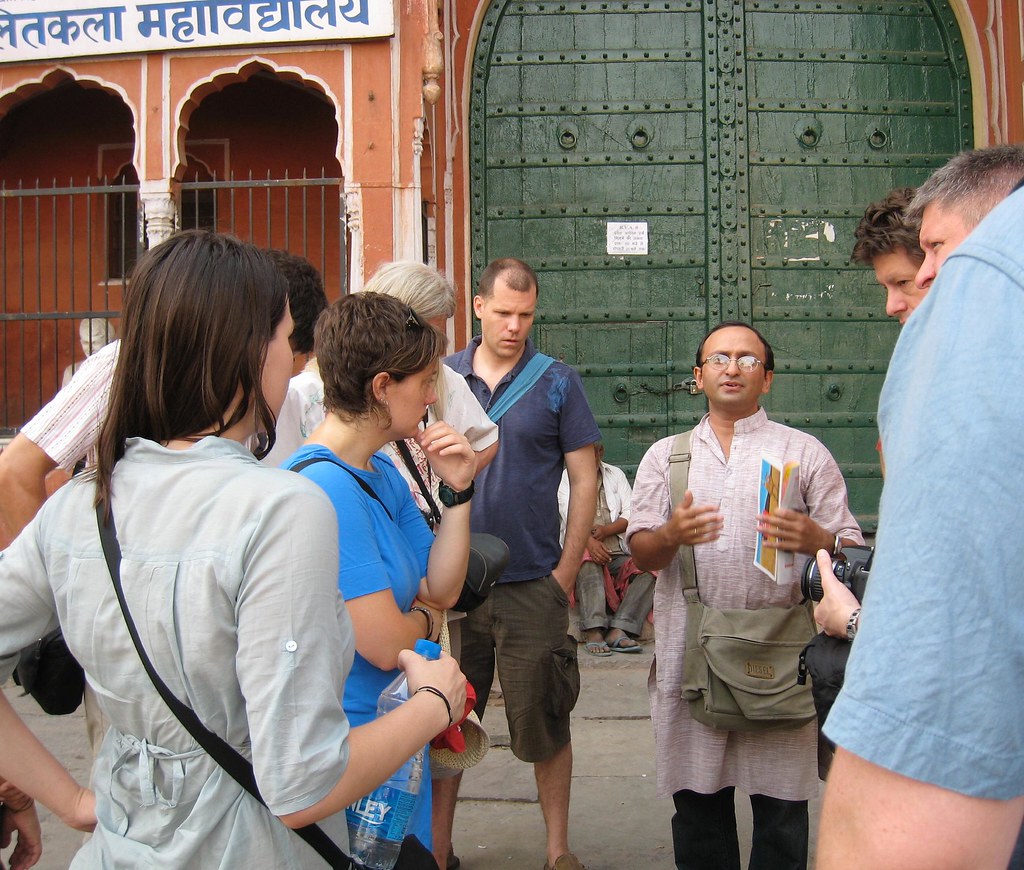 |
Rajasthan School of Art
The walk started from this building, originally built by the Prime Minister of Maharaja Ram Singh II, as his residence. It was converted into a school of arts in 1866. The school used to train people in all the 36 different crafts skills. Vineet Sharma in the centre is guiding the heritage walk. |
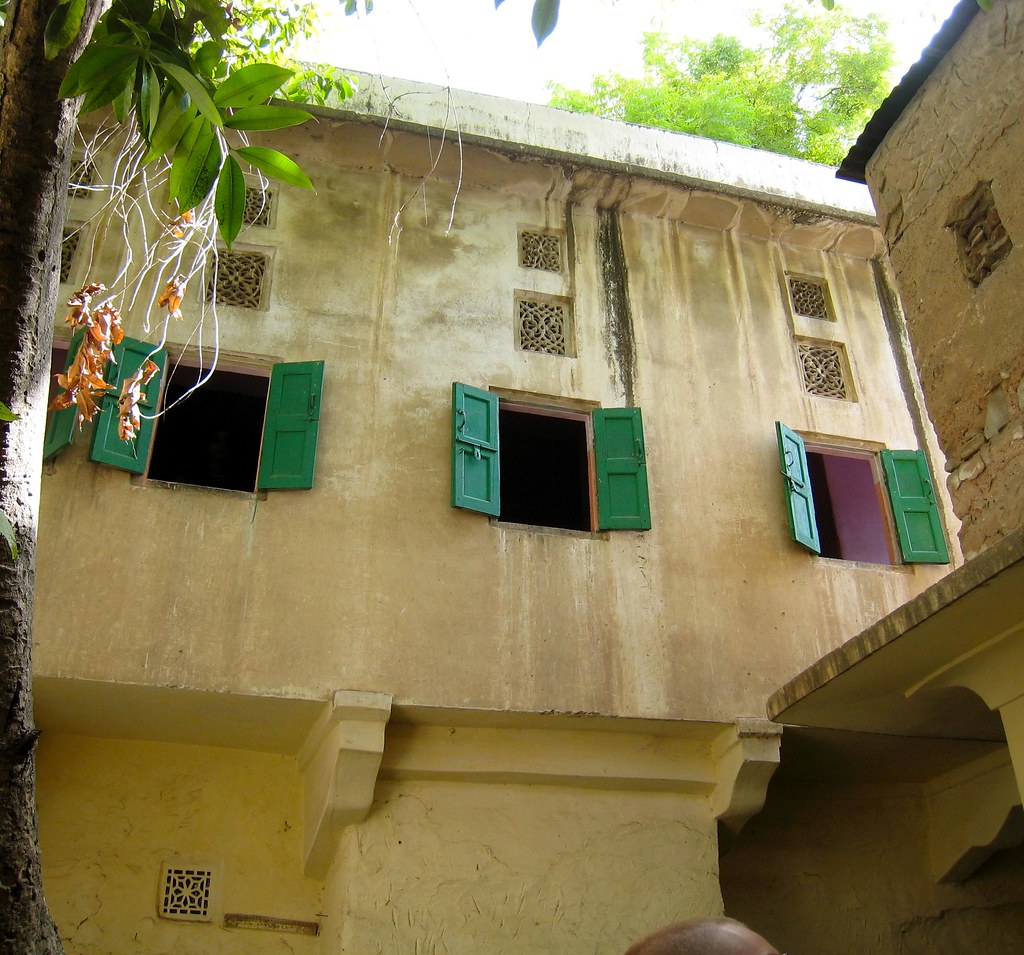 |
Residential house within wall city
Jaipur was planned in a gird system with wide straight avenues, roads, streets and lanes and uniform rows of shops on either side of the main roads, all arranged in nine rectangular city sectors (chokdis). The old city is surrounded by a wall having seven gates. |
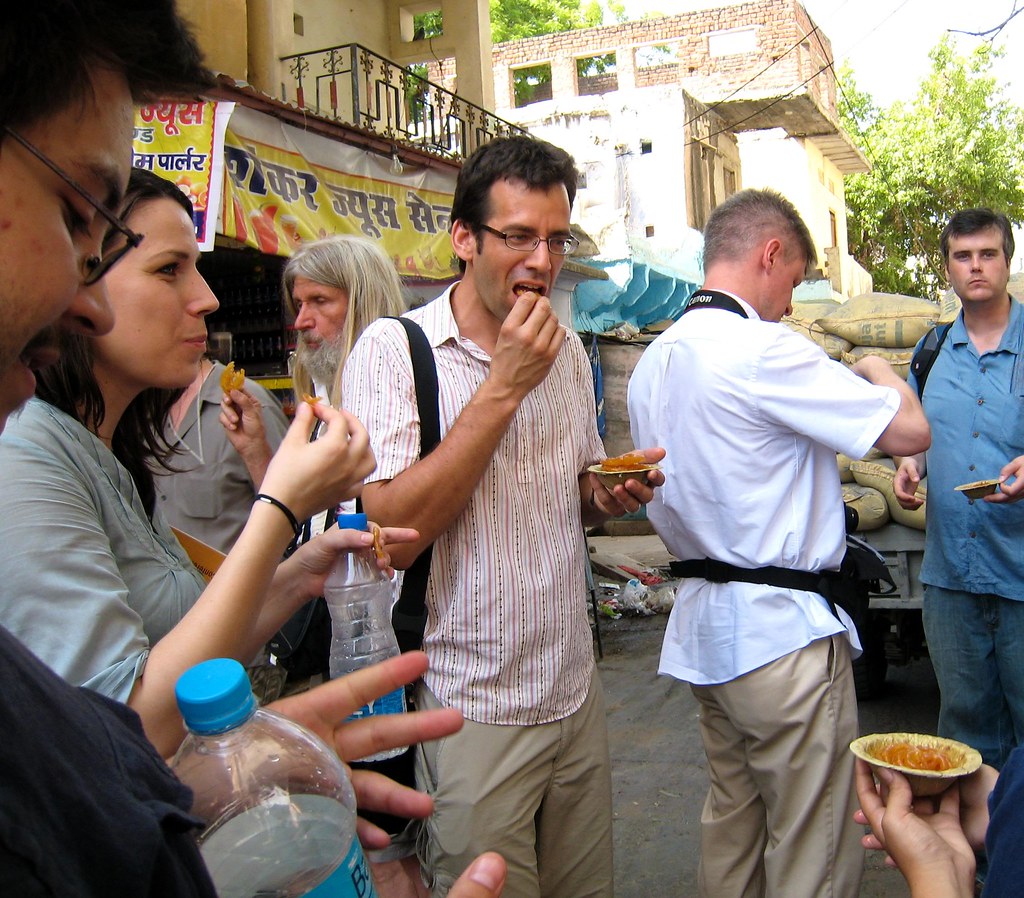 |
The group is enjoying the snacks from the very popular roadside vendors who sell Kachoris with yoghurt and Jalebi’s, a very popular Indian sweet. The daily sale of these vendors outnumbers the sale of other sophisticated shops.
Sunday morning, no structured class, the scheduled day for
The Jaipur Heritage Walk |
 |
Thatheron Ka Rasta
Nanak Ram Patel Ki Gali
Craftsmen make brass utensils for domestic and temple use. They reside and work here. Traditional hand tools & implements are still used by these craftsmen. |
 |
Digambar Jain Temple Sangheeji
This temple was built in 1731 A.D. just four years after Jaipur came into existence. It is dedicated to Lord Shri Vimalnathji. Traditional golden Kundan work on the walls gives the temple a unique look. |
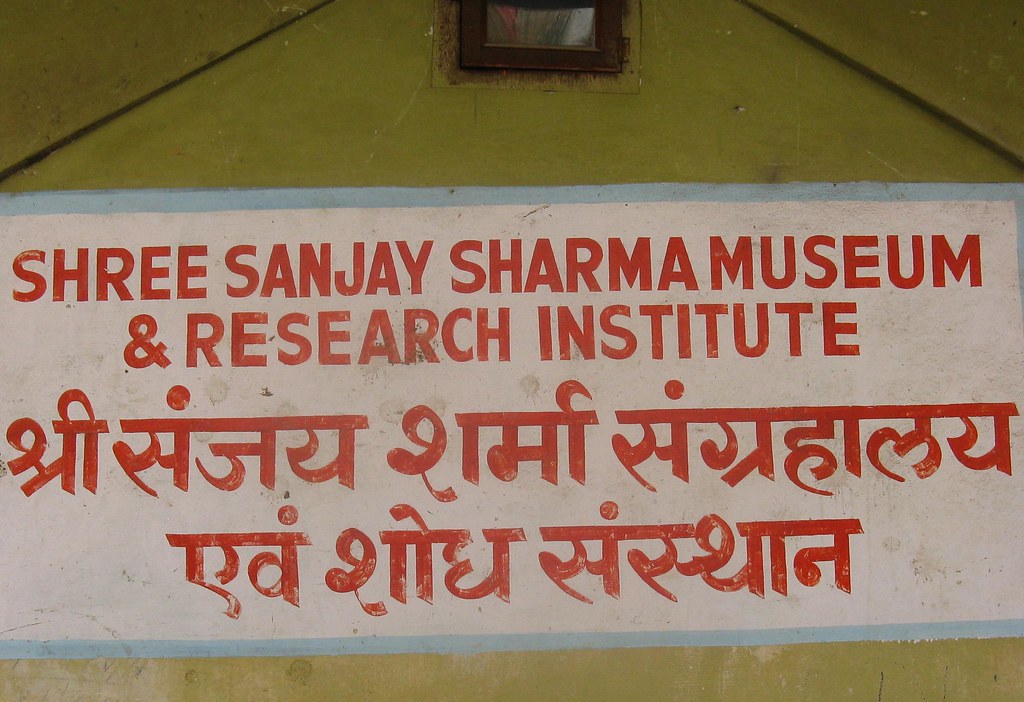 |
Shree Sanjay Sharma Museum
A storehouse of 100,000 different manuscripts and bookstands. Displayed in a number of rooms, a wealth of 18th-century shoes, historic games, yoga paintings in this small but most interesting museum. |
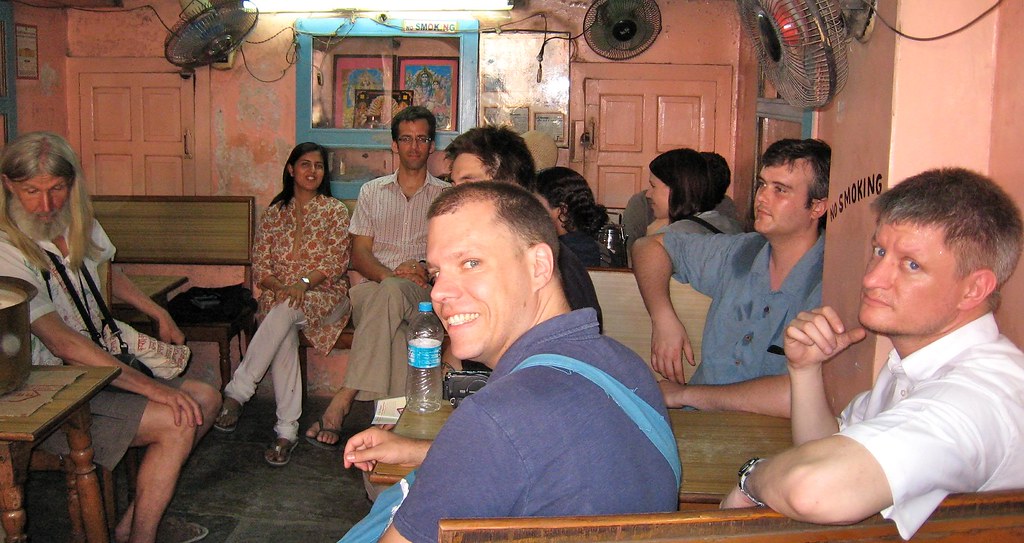 |
Tea Stall - New Gate
This is the very famous tiny tea stall that starts early morning and is always crowded with all kinds of people. The walk ended with experiencing the taste of traditional Indian tea (Chai). |
14th June Prof. K.C. Sogani
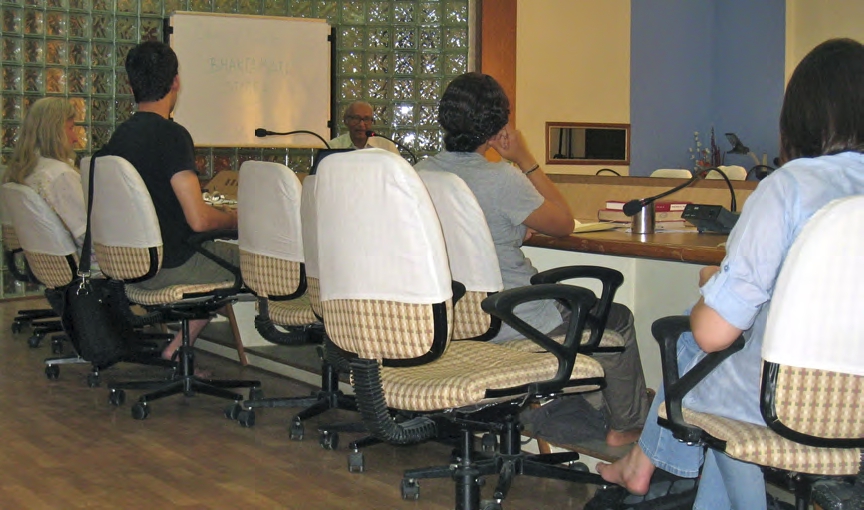
Basis of Ethics, Anuvratas and Mahavratas
The five great vows form the foundation of Jaina tradition. They are called great because they are to be observed without any exception whereas in the small vows of the householder, a concession is given, so that he can fulfill his obligation towards to wards his family and society. The great vows on the other hand are unconditional and absolute.
Religion and Morality
Jainism is humanistic in its approach and spiritualistic in its depth. These two elements are so intertwined in it that one is apt to confuse religion with morality. Some of the key points are - Religion and morality are not identical; religion and theology are not identical; religion as a transcendental mystical experience and Subha (good) and the - Subha (the good) to be distinguished.
15th June Prof. Dayanand Bhargava
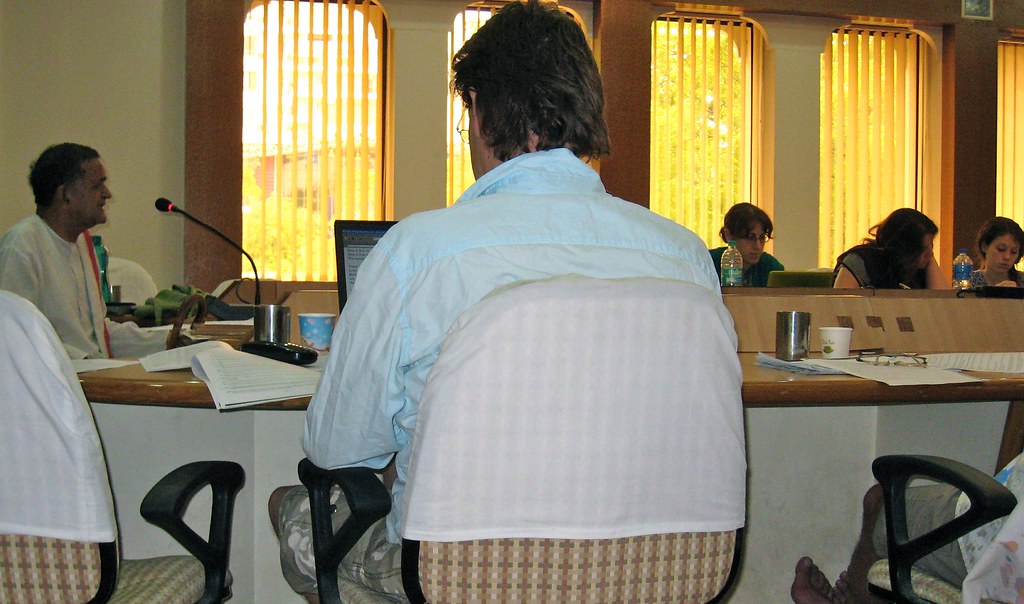
The Code of Conduct of Jain Monk
Like any other Indian philosophy Jain philosophy is also rooted in religion. The moral code of Jainism preaches asceticism to its extremes.
In the earlier scriptures of the Jainas, the gospels are addressed mainly to monks. It means asceticism occupies the central place in Jainism.
The conduct of a Jain monk is the highest example of asceticism. He is expected to practice in what he believes.
A monk can practice spiritualism without any distinction of caste and color. There are some qualities, which are to be observed by all ascetics. They should observe the five great vows (mahavratas); must have an attitude of restraint and practice samitis; must observe mental, vocal, and physical discipline (guptis); should have control over their senses; must lead a life of austerity; should have control over food habits and should be detached; full of forbearance and forgiveness.
15th June Visit to Prakrit Bharati
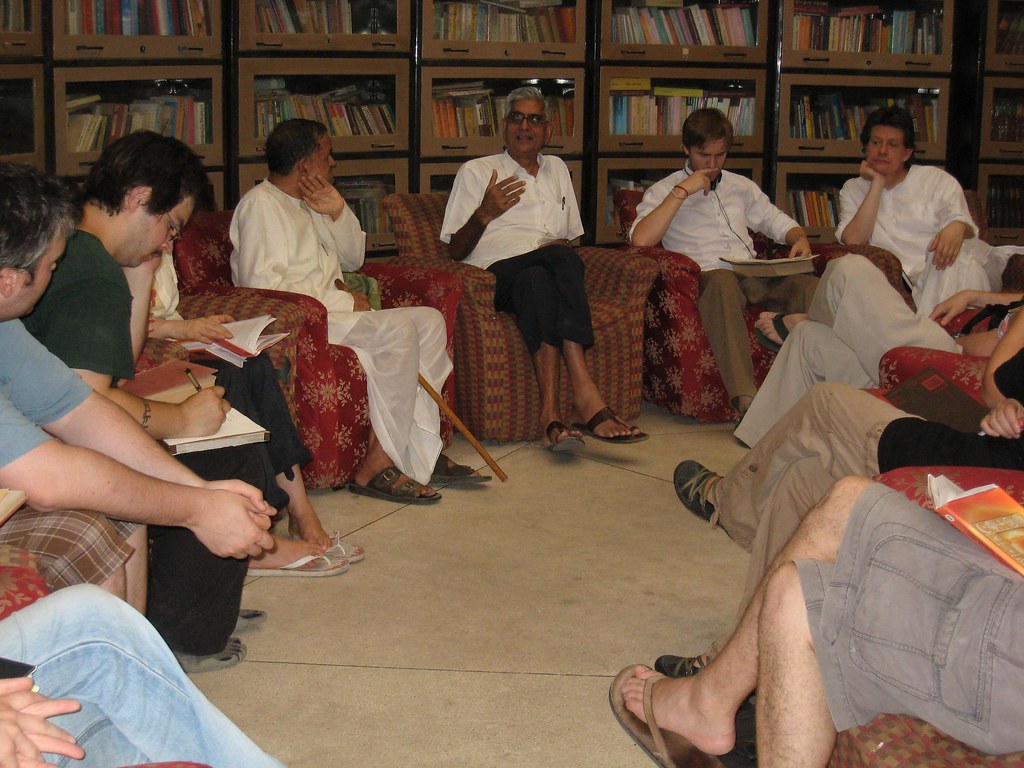
Prakrit Bharati Academy Jaipur- students visited this with a keen interest to see the original Jaina text.
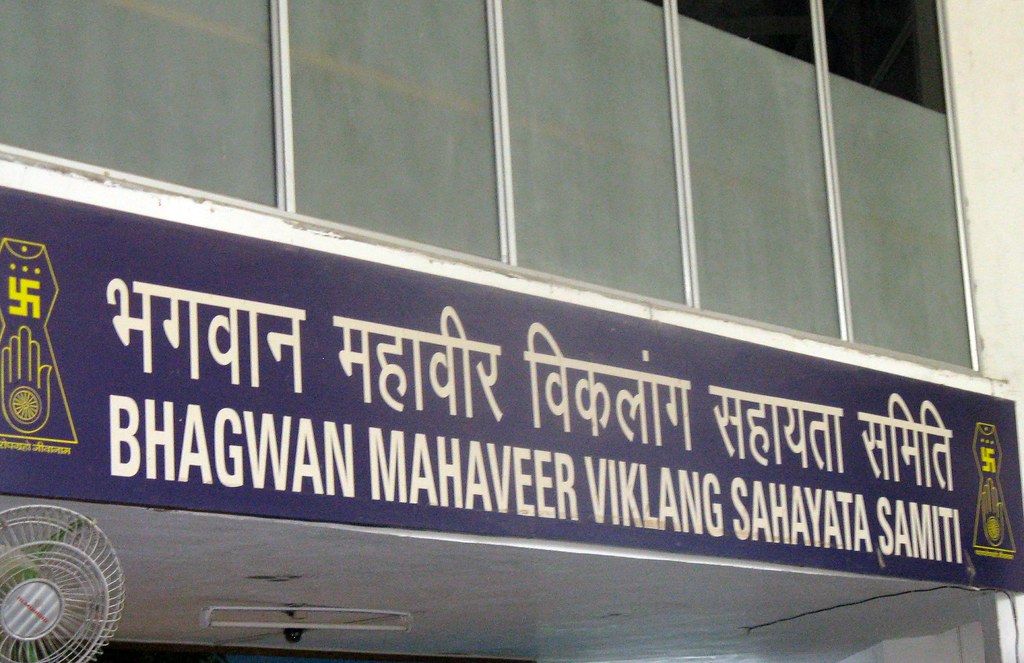
BMVSS is a non-governmental, non-religious, non-sectarian, non- regional, non-political society, for helping the physically challenged, particularly the financially weak among them.
16th June Prof. K.C. Sogani

Spiritual Awakening
It is said in Acharanga that the ignorant are asleep and wise are awake. In Jaina terminology it is said that is tantamount to achieving Samyak Darshan (Spiritual Awakening). When we are asleep we are in the state of (Spiritual Perversion) known as Mithya Darshan. Spiritual awakening is the foundation of the magnificent edifice of liberation.
Gunasthan - Stages of Spiritual Development
Parmatman is the true goal of the mystic quest. The journey from Antaratman to Parmatman is traversed through the medium of moral and intellectual preparations, which purge everything obstructing the emergence of potential divinity. Jain tradition deals with the mystic way under the fourteen stages of spiritual evolution technically known as Gunasthanas.
17th June Prof. Dayanand Bhargava
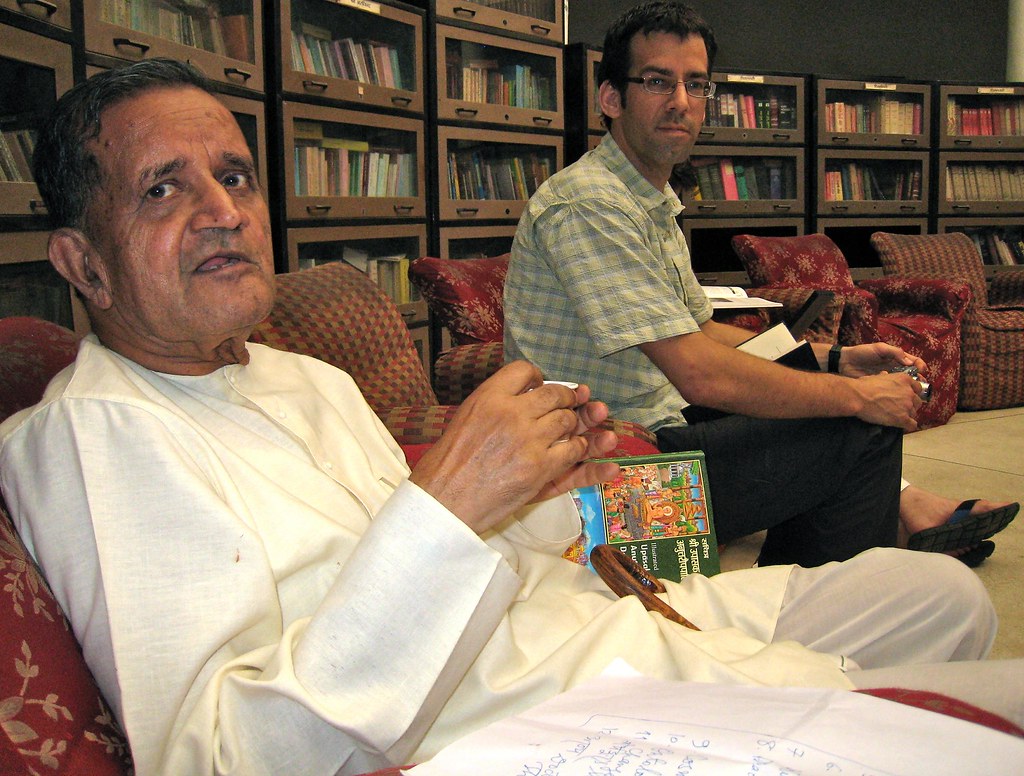
Sallekhana and Santhara
The body is the means and not the end; it is the means to attain liberation. One has to leave the body at the end. The Jainas, therefore, prescribe forsaking food and sometimes even water and leave the body with equanimity under certain circumstances. This is known as Sallekhana or Santhara. This is supposed to end or shorten the mundane existence of the soul in the whirlpool of transmigration from one life to another. This is allowed only when one feels that he or she is not able to perform his religious duties with efficiency anymore. A healthy person who is physically fit is not allowed to take Sallekhana.
There is inscriptional proof that Jain monks, nuns and householders have been observing Sallekhana for the last two thousand years. The end of life is death. All is well that ends well; it can thus be aptly said that it is the spiritual way of meeting death.
18th June Prof. Kusum Jain

Philosophical Background
The philosophical schools of India are broadly classified into two - The Astik - following the Vedic tradition and the other is Nastik, the anti-Vedic tradition. Sankhya, Yoga, Mimansa, Vedanta Nyaya and Vaishesika are the six schools of thoughts under the Vedic tradition. Charvaka, Jainism and Buddhism are the non-Vedic tradition. Despite the difference in philosophies - the basic metaphysical question on reality is observed by each of these traditions.
Three basic branches that Philosophy deals with are -
Metaphysics- is the nature of reality whether it is permanent or temporary.
Epistemology- is concerned with the nature of knowledge, ignorance and logic.
Ethics- deals with the conduct- good or bad, right or wrong and the ultimate values of life
Concept of Anekantvaada- In Jaina system of philosophy, the concept of reality is manifold, highly complex and pluralistic in character. This term is made of three words - aneka (many), anta (aspects or attributes), and vada (theory). The modern scholars have described it as the theory of relative, pluralism or of relativity.
Recognizing another perspective makes you more tolerant. The solution of any problem is change of perspective. Emphasize on also not on only. According to Jains reality is both temporary and permanent.
Syadavada is the linguistic expression of Anekantvada. It is the theory of conditional predication based on saptabhangi.
21st June Dr. Pratibha Jain
Gandhi and Jainism
Some of the cardinal principles Gandhi is known for are not written on his theory but he wrote extensively on different influences on him from Gita, Ramayana and Tolstoy He does not directly talk about his influence from Jainism.
Gandhi’s secretary Pyarelal, claims Gandhi influence from Jainism’s at three levels - Nonviolence (Ahimsa); Vows (Vratas); and Theory of Syadavaad. Gandhi believed what you think of truth is just a perception of truth; there are different sides of truth. Jaina philosophy leads one to explore more as there are different perspective of truth.
21st June Shri N.K. Sethi
Jaina Law
Law should be known for living in this world.
The Jaina Law was originally a part of what is known as the Upasakadhyayana Anga.
Its existing sources mainly are the books which are mentioned below:
The Bhadrabahu Samhita. The Arhan Niti. The Vardhamana Niti. The Indranandi Jina Samhita. The Adi Purana.
22nd June Shri S.L. Gandhi

Ahimsa and Ecology
Jain scripture Acharanga, 12/3/63 says:
“The instinct of self-preservation is universal. All beings are fond of life and of life and like pleasure. They hate pain, shun destruction like life, love to live and avoid untimely death. To all life is dear. Hence all breathing, exciting, living sentient creatures should not be slain, nor treated with violence, nor abused nor tormented or driven away.”
Mahavira has also explained the concept of Ahinsa in deeper philosophical terms as follows:
“There is nothing so small and subtle as the atom nor any element so vast as space. Similarly, there is no quality of soul more subtle than non-violence, and no virtue of spirit greater than reverence for life.”
22nd June Prof. K.C. Sogani

Bhakti (Devotion)
Devotion is a sublime affection. It is the feeling of heart and soul. Devotion is not the ultimate but a means in Jainism. A devotee is overwhelmed and feels intoxicated all the time. An important bhakti stotra in Jainism is the Bhaktamara.
Jainism does not uphold the idea of a God, but it undoubtedly recognizes the Arhat and the Sidha as the divinity-realized souls who may be the objects of devotion.
Devotion is important but not the ultimate; it is the means to meditation. Meditation is the ultimate.Dhyana (Meditation) The practice of the fourfold virtue of Maitri (friendship); Pramoda (appreciation of merit of others); Karuna (compassion) and Madyastha (indifferent to those who are irrational) constitute the mental pre-requisite conditions for meditation.
Farewell Lunch at Shivani Bothra Family

Prof. Dayanand Bhargava and Rudi Jansma very kindly agreed to join us for the lunch. As it is seen in the picture students did not miss the opportunity and showered Bhargavaji with questions on Jainism in particular and Indian philosophical traditions at large.
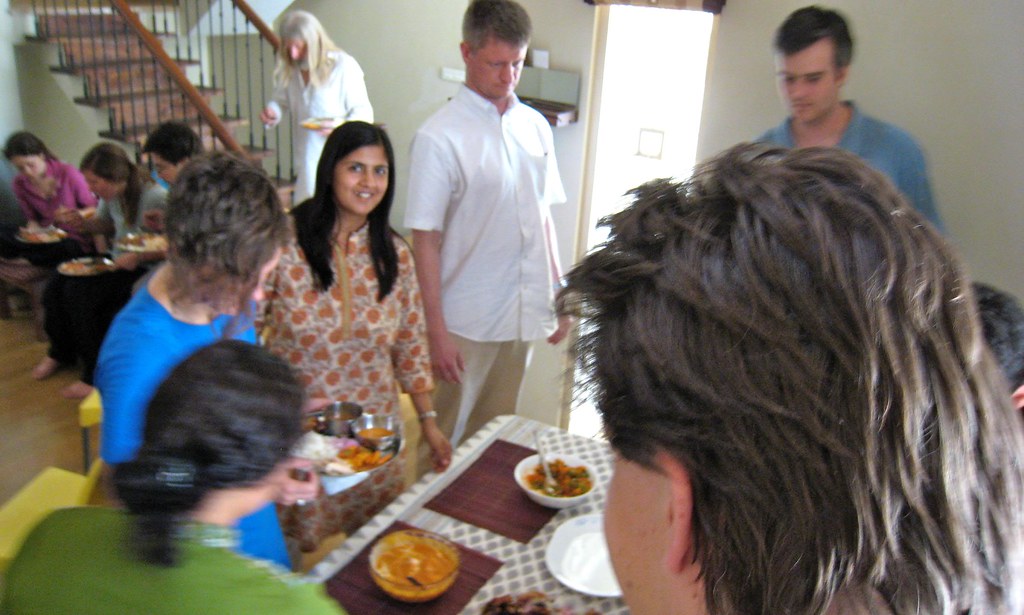
Meeting the Jain Shwetambar Terapanth Nuns
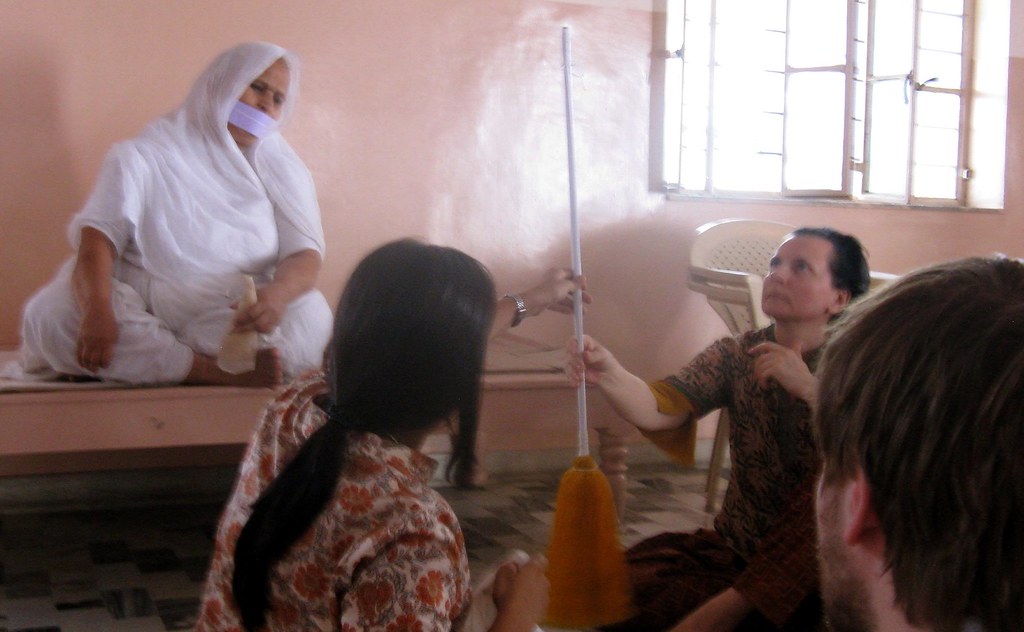
The lunch was followed by the visit to the Terapanth sadhvijis (nuns). They were very excited to see the Rajoharan, pots and other products hand made and used by the Sadhvis. Once again the nuns were showered with questions on philosophy, their family backgrounds before renouncing and what made them to fall the path of austerities.
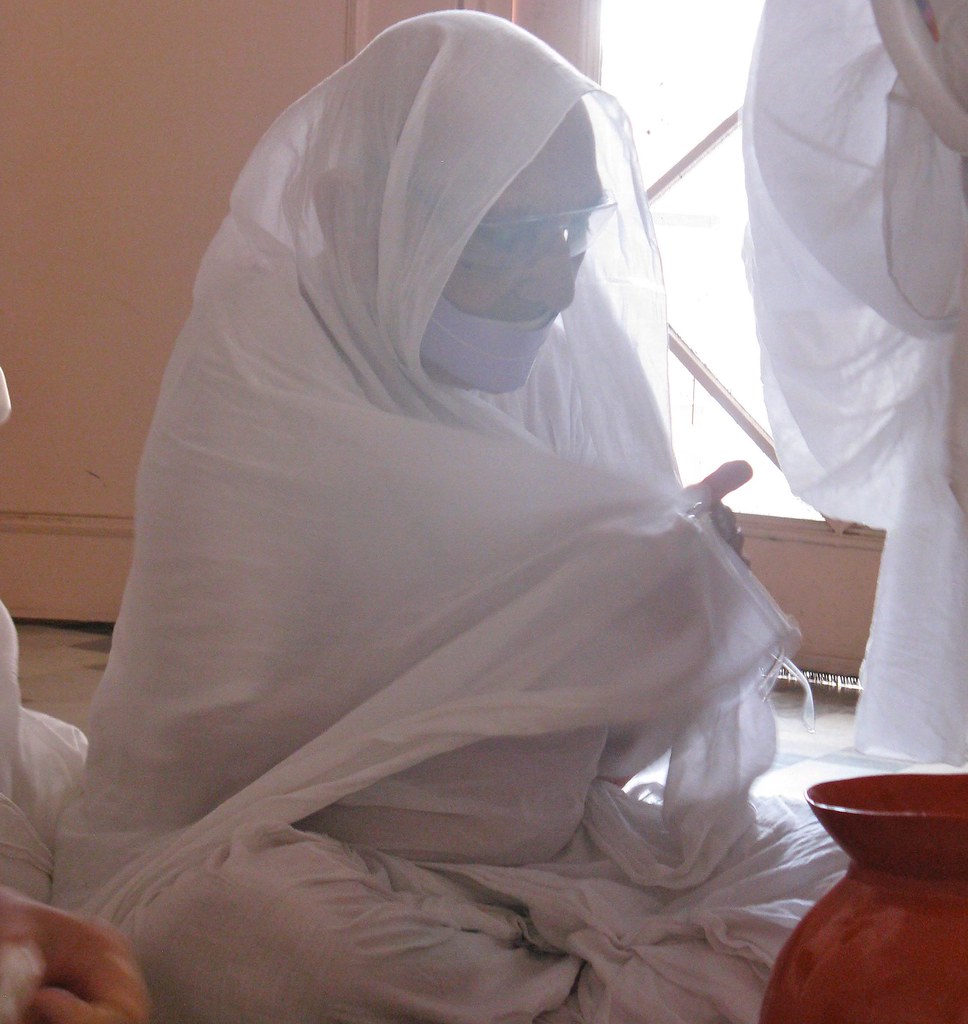
Sadhvi Saraswati Shri ji
22nd June End of the Jaipur Program
Program Centre
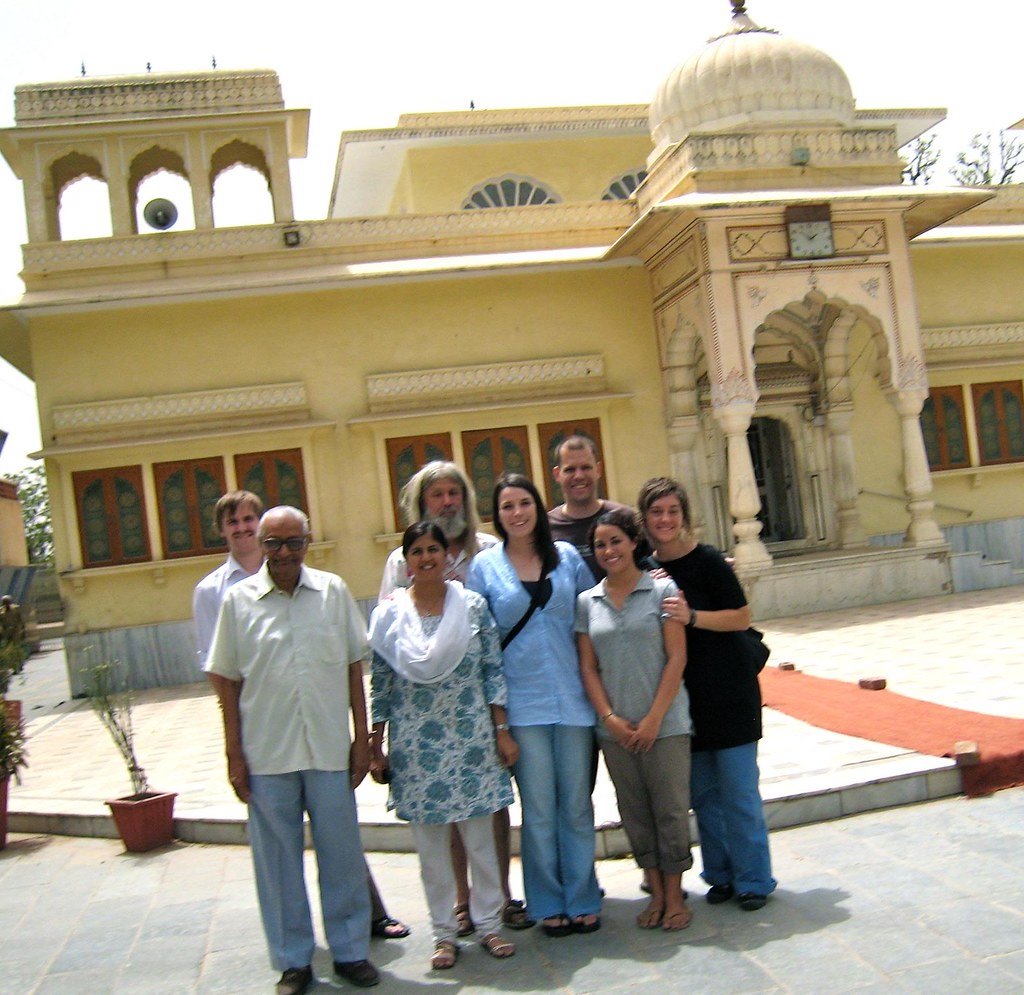
Bhattarakon Ki Nasiyaan
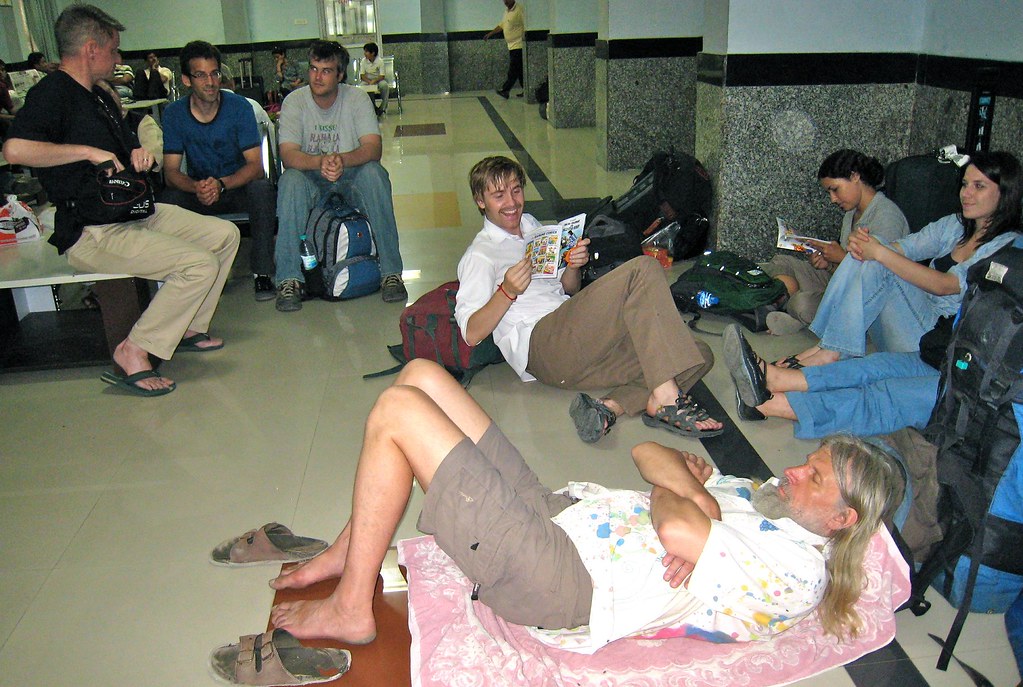
Waiting Room at the Railway Station
Relaxed and eager to explore and experience the next destination: Varanasi
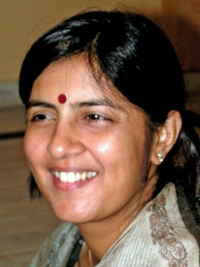 Shivani Bothra
Shivani Bothra
